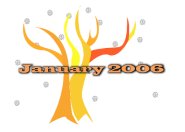
|
 |
|||||
Dedicated to providing information for learning assistance professionals. |
||||||
 |
Bubbling: A different kind of revision strategyBy Kyle Cushman, Vermont College of Union Institute and University |
|||||
|
Sometimes after reading a student's paper I know it's not holding together, but I'm just not sure why. Sometimes the student writer knows this too and we are both baffled. This is when it's time to get out a colored pen and start bubbling. What the heck is "bubbling?" Bubbling is a great revision strategy which helps students to identify organizational problems at the paragraph level. Bubbling also helps students to improve the overall organizational flow of their writing. To use this revision strategy, students mark up their drafts by writing each topic they see in each paragraph in short 1-4 word phrases and circling them. For example, for this paragraph, I would write "What is bubbling?" in the margin beside the paragraph and circle it: What is bubbling?
In well-crafted prose, each paragraph is usually organized around one central idea or topic. In the course of the essay, paragraphs then flow from topic to topic in a clear, logical way. Sometimes when writing goes awry, it is simply a matter of paragraphs not being organized well. Like a crowded subway car, some paragraphs have too many topics crammed into them. Every idea is hollering for attention and the reader gets confused, dismayed and just wants to get off at the next stop. Or there are similar ideas dwelling in separate paragraphs which really need to be brought together to establish a stronger connection. Bubbling can show students how to revise to solve these issues and can also uncover disorienting topic jumps from one paragraph to the next which would then benefit from stronger transitions or a reorganization of paragraphs. To experiment with the revision strategy of bubbling, and/or to teach your students how to use it, follow these steps:
a. Does each paragraph have only one topic
or main idea? Revising and reorganizing your writing with this information in mind
will help you to create a stronger essay with a much clearer progression
of ideas. Good luck! Questions or comments? Contact the author at kyle.cushman@tui.edu. |
||||||
| Home::
Past Articles
:: Conferences
:: Citation
Information :: Feedback
:: About
the Authors :: Subscription
Information Site Last Updated January 24, 2005. Sponsored By AccuTrack and NCLCA |
||||||